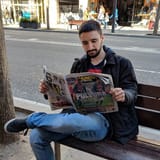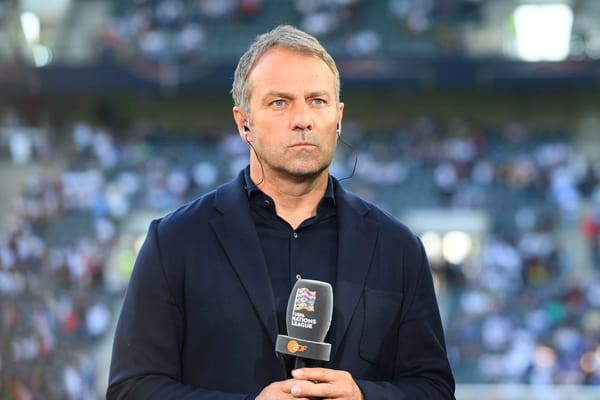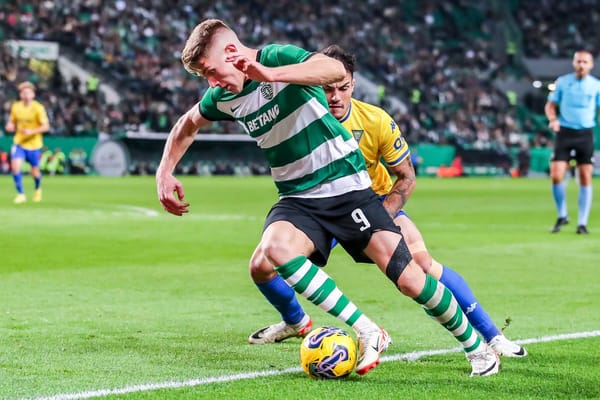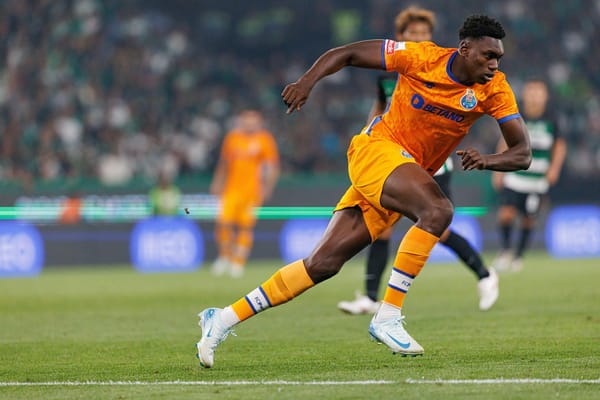Life after Busquets: The future of Barcelona pivot role
Life after Busquets will be hard and the Catalans haven't found a way around it yet.
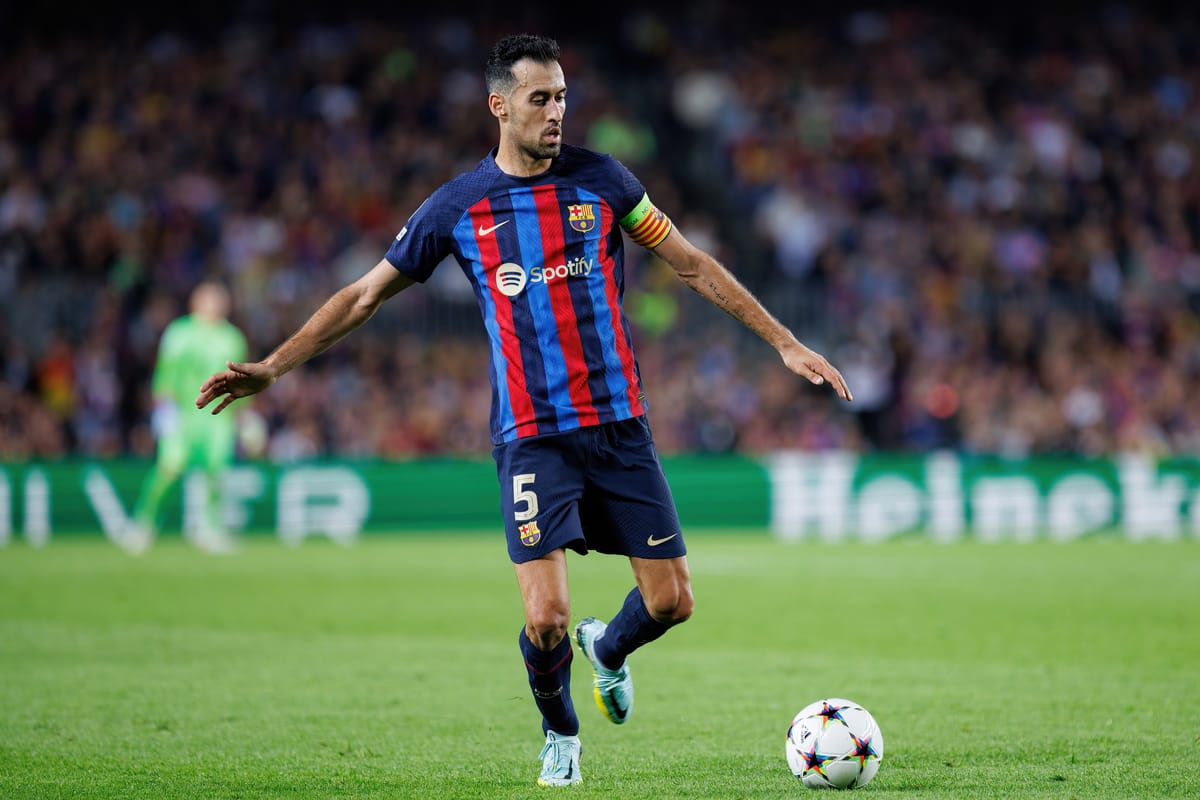
If you’re a younger fan or just a younger follower of the club, you’d be forgiven for thinking Sergio Busquets has always been around. After all, that’s not that far from the truth either. According to Transfermarkt, aged 33, the veteran midfielder has already amassed a total of 651 games for the Catalan giant, and that figure is bound to still grow. Going back as far as 2008/09, Busquets has been a mainstay in the team, redefining what everyone has come to expect from the role he now epitomises. For better or worse.
It’s been more than a decade since Barcelona have last had to resort to someone else occupying the pivot position and orchestrating their attacks. And while it’s definitely impressive how dominant and influential Busquets has been in his performances, it’s also a part of a very big problem. What happens once he retires? He’s already in his 30s, losing pace and diminishing physically. Of course, not that those traits have ever really defined him as a player but there comes a time when they start weighing everyone down, regardless of their profiles.
Even with all of that becoming increasingly evident over the years, Barcelona have been unable to find a proper replacement. Not for the lack of trying though. Someone like Frenkie de Jong was always seen as the perfect natural successor to Busquets’ throne and the more recent emergence of Nicolás ‘Nico’ González has prompted fans to ask for the veteran’s systematic phasing out of the team. Out with the old, in with the new. But it’s never that easy, is it?
Through trial and error, Barcelona have soon realised neither De Jong nor Nico would be the natural successors to Busquets. Why? The short answer is that their profiles are different; they excel at different aspects and ultimately offer a different outlook on a role that’s long been set in stone. Anything even remotely diverging from that was quickly deemed not good enough. But does different really mean worse?
In this analysis, I’ll put forward two different paths Barcelona can explore following Busquets’ departure. One will represent staying true to the profile and trying to find that natural successor we keep mentioning. The other, however, will argue in favour of the departure from tradition, pursuing different profiles in what feels like the natural evolution of the role.
But first, what do we even know about Busquets?
Defining the role
In football, there are various different ways a pivot can be deployed. Players in that no.6 role have traditionally often been defensive midfielders, staying true to their name. Nowadays, however, the position has expanded to destroyers, deep-lying playmakers, holding midfielders, registas, volantes and so on. Busquets is not that easy to define but falls somewhere between a midfield controller and a hybrid or volante. That means he’s the tempo setter with the technical quality to influence play in the higher areas of the pitch too.
But just because he has a profile that’s much broader than just pure controller, it doesn’t mean his role deploys him as such. Let me explain. Busquets plays for two teams at the moment - Barcelona & the Spanish national team. The way he’s been utilised at the former is different from the system the latter prefers. For Spain, Luis Enrique sees Busquets’ arsenal as invaluable higher up the pitch, often allowing the midfielder the freedom to advance and combine in the final third. At Barcelona, however, that is not the case. Barcelona pivots are instructed to stay deeper, retain the ball at the highest level, beat the pressure and assist the first phase of build-up play.
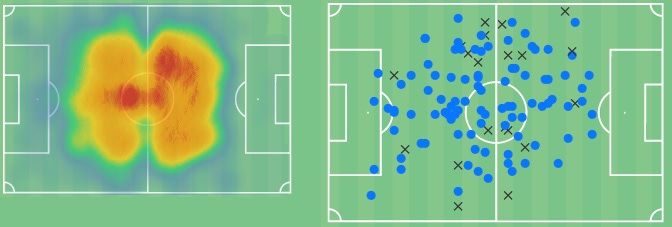
Generally speaking, Busquets spends a lot of time on both sides of the pitch but more context is needed here to explain why. Since Barcelona usually dominate possession and teams drop into mid or low blocks against them, the backline along with the pivot is positioned around the halfway of the pitch. That’s why the heatmap is at its ‘hottest’ in those specific zones. But you can also clearly see Busquets drops deep down the central channels and spends a significant amount of time there. This is where his progression comes into play, taking the ball from the centre-backs and spraying it forward.
And it’s mostly his passing that accounts for the very high actions in the graph to the right; one-two touches and short link-up play that either sets his teammates up or helps ball retention around the most favourable zones on the pitch. Below you can see some of his most recent passmaps and I’ve highlighted two main clusters that can define his role quite well.
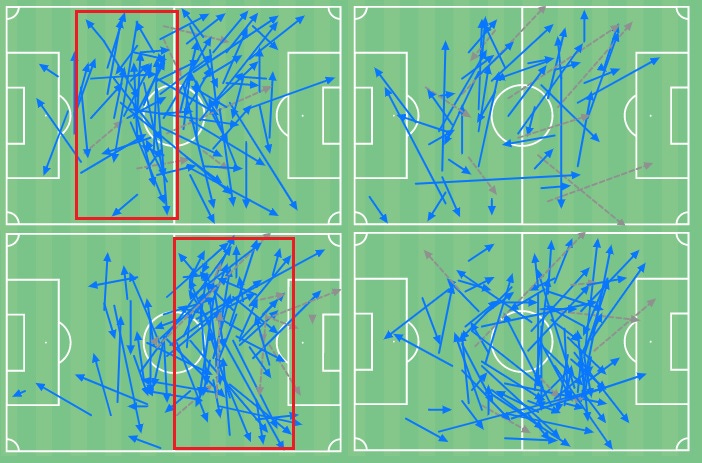
The first cluster in the map in the upper left quadrant is the deepest one. This is where Busquets receives possession and then progresses, usually via vertical or diagonal passes to his interiors, full-backs or directly to high-priority targets up front. The second cluster, however, is the result of the second phase of Barcelona’s attacks once the possession has settled in the opposition’s half. This is where most of his ball retention and recycling happens and is logically the busiest part of the graph. Barcelona’s possession flows through the 33-year-old and is generally safest at his feet.
So while Busquets can do more, he isn’t instructed to do so. His role is very clearly defined but also quite limiting in some ways. Busi is, of course, very good at what he does so generally, this isn’t seen as a flaw or something weighing him down. His dribbling and passing can be lethal but since he’s often ‘boxed in’ the first two thirds of the pitch, it’s mostly underutilised at Barça.

But when you see what he does for Spain, you can’t help but wonder if there’s more Barça could potentially get from his role. The answer, in my opinion, is yes. Yes, Barcelona could certainly get more from him and more from the role he plays but it would require an overhaul of how their pivot(s) play the game. This is actually where we come back to the likes of De Jong and Nico.
Let’s discuss them next.
Break with tradition
I’ve already talked about both of these players in detail in one of the previous pieces on this substack. Both De Jong and Nico are very similar profiles but with some core differences in regards to their roles on the pitch. But we’re not going to discuss them as interiors this time but rather as Barcelona pivots. Just as the Barcelona no.8 has a very specific task list and preferences, the same is true for the no.6. After all, we’ve seen that even Busquets can feel subdued by what is expected from him despite having the toolkit to potentially do more.
But while Sergio still thrives in the role Barcelona have given him, trying to force De Jong and Nico into those very same shoes ends up doing more damage than good. Both of them are naturally far more aggressive than Busquets and chaining them to the first third of the pitch limits them greatly. Let’s take a look at De Jong’s heat and action maps below.
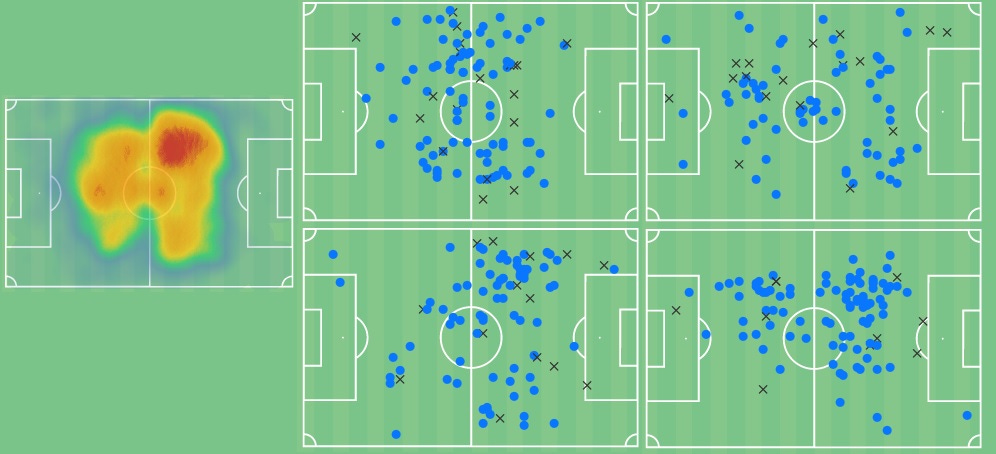
You’ll notice there is a difference here from his usual maps. I’ve filtered it to only show the games De Jong has played as the defensive midfielder for Ajax and the Netherlands, giving us the core difference between that role, in which he thrived, and the one he’s been given at Barcelona. Also, the two action maps on the left are taken from his games with the Netherlands while the ones on the right are Ajax games. While there are differences, both indicate a much more aggressive profile of a player who likes to start deep, yes, but not remain there for too long.
This is something the Barcelona pivot role would never allow. At the same time, however, it’s taking away one of De Jong’s most powerful tools - progressive running. While Busquets can beat his marker deep on the pitch, similar to what Frenkie would do too, he’ll then proceed to pass the ball to a nearby teammate. Contrast that to the Dutchman who would immediately charge into space and you get a drastically different output.
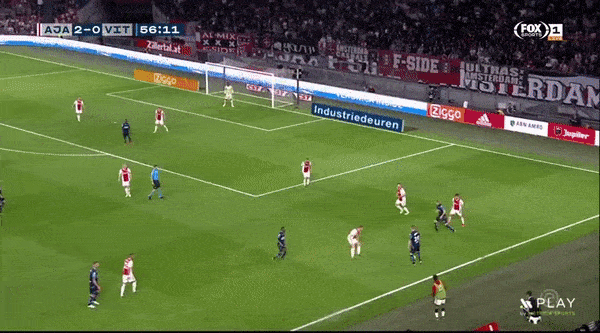
Above is a clip from his late Ajax days. And it’s also a sequence you’d never see from a player like Busquets. Firstly, because he lacks the pace and the drive to aggressively attack space like that but also because his profile and role are vastly different in those aspects of play.
This contrasting output can also be seen in De Jong’s passmaps as the defensive midfielder for Ajax and the Netherlands once more. His passing seems more aggressive, vertical and always reaching at least the final third despite deep initial positioning. That’s because many of those passes are only deployed after he’s beaten his marker and advanced up the pitch in one of his trademark runs.
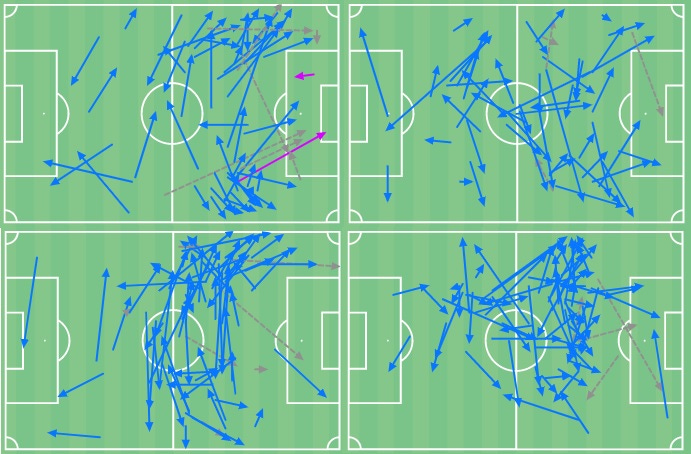
If you cast your mind back to Busquets’ passmaps, you’ll see that he mostly recycles and retains the ball in the areas De Jong will often create from. Again, this has nothing to do with ability or lack thereof but rather with what’s expected from a player in a certain well-defined but also a very boxed-in role. Busquets will thread passes better than most - if not all - current Barcelona players but his role will often not allow him that freedom so high up the pitch.
A very similar thing is true for someone like Nico. Just like De Jong, the young LaMasia graduate is developing into a much more aggressive presence than what we usually associate with Barcelona pivots. At Barça B, he was often deployed as the no.6, prompting people to immediately start with ‘Busquets successor’ chants. But while there was certainly substance to those claims, Nico would soon diverge from that role quite drastically.
Due to his highly aggressive and even physical presence, doubts arose on whether he should indeed be the pivot or a Barcelona interior instead. After all, the higher up the pitch he is, the more use the Catalans can make of his very particular skill set. And while that is certainly true, Nico can still be a no.6 as well, albeit different from the traditional one and more akin to what De Jong would offer too.
Below, I’ve filtered all the games Nico has played as the defensive midfielder for Barcelona and Barcelona B, giving us a good outlook on his profile in deeper areas of the pitch. And unsurprisingly, it’s still highly aggressive and arguably more similar to De Jong than Busquets.
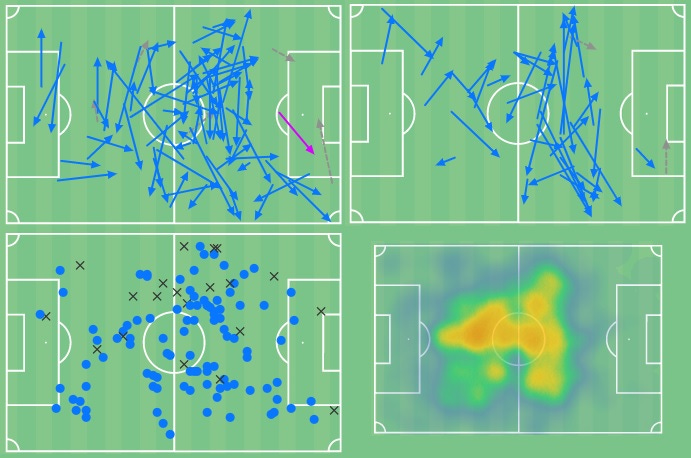
We can see Nico steps up into the box too and has similar passing tendencies to the Dutchman when he’s in that pivot role himself. So while it certainly suggests a break with tradition, the change wouldn’t necessarily be bad. But it would be a change nonetheless. Expecting Nico and De Jong to operate in the same way as Busquets won’t do Barcelona any good simply because they are fundamentally different players.
So along those same lines, it’s not that they are not good enough to be pivots but lose too much if they’re trying to fully replicate the role in the traditional Barcelona sense. ‘You bought a Ferrari but you drive it like a Fiat.’ Zlatan Ibrahimović famously said of his stint at Barcelona back in the Pep Guardiola days. And interestingly, parallels could be drawn here too. Limiting Nico and De Jong to the traditional pivot role would be akin to driving a Ferrari like a Fiat. There’s potential for so much more.
Still, there is a way to stay in line with tradition and look for a like-for-like replacement for Busquets. For that, however, Barça would have to trust LaMasia once more.
Back to the roots
It doesn’t come as a big surprise that if Barcelona were to find a natural Busquets successor, it would have to come from within. Yes, there are players out there in the market who would fit nicely but they are mostly unattainable for the Catalan outfit. But ‘outsiders’, regardless of their skill and profile, often struggle to adapt to the Barça style of play right away. So going for someone from within could potentially eliminate that initial period altogether.
Two players I want to discuss here are Jandro Orellana, the 21-year-old Barça B midfielder, and Marc Casadó Torras, the 18-year-old Juvenil A/U19 midfielder. Both of them are, in my opinion, the closest thing Barcelona will get to Busquets in terms of profile. It has to be said, however, that players in the youth levels often play different roles. Even though Orellana and Casadó are both defensive midfielders, they will also play practically across the midfield line, which is something Barcelona do to maximise their profile and develop them as players.
With that being said, however, they are still very similar to what Busquets represents. Let’s take a look at their action, pass and heatmaps down below for more clarification.

What you’ll quickly notice is the activity in the deeper areas of the pitch. Both Orellana and Casadó are controllers that connect the third quite well. They’re not always natural creators but can retain, recycle and direct possession while dictating the tempo quite well. Not unlike a certain 33-year-old in the first team too. I’ve done detailed reports on both of them, which I’ll link down below as well.
Let’s take a closer look at their profiles next, starting with the older player, Orellana. For quite a long time, he’s been one of the most prominent academy graduates but due to severe injuries last season, the 21-year-old has somewhat fallen down the pecking order. However, when fully fit and in his brilliant best form, Orellana is the closest player I’ve seen to Busquets in LaMasia.
He will regularly drop just ahead of the backline or between the centre-backs to then be the first and main progressor of the team. In terms of his profile, I’d describe Jandro as a ball-winning defensive midfielder & a deep-lying playmaker hybrid, a very similar description I used for Busquets at the start of this analysis.

Another way I’ve described him in the past was through incredible mastery of space, time & distances. Jandro has the ability to recognise what space to occupy and what space needs to be exploited. That is evident in his movement & passing. Usually, he's at the centre of Barcelona B's network and the hub of the team, as you can see in the example above.
In other words, he's used to connect thirds, reset attacks and find better angles to progress the ball. Needless to say, he does this on an extremely high level and can find solutions to most situations and issues faced on the pitch.
Orellana would be Barcelona’s out-of-jail card when they’re highly pressed in intense scenarios. At times, however, he can be a bit tame on the ball but again, this might be due to the constraints of the role.
Crucially, he is able to break lines and progress play to advanced areas, albeit from deeper zones of the pitch. Again, akin to Busquets who won’t necessarily push up to deploy threading passes but will rather stick to his position and orchestrate from there.
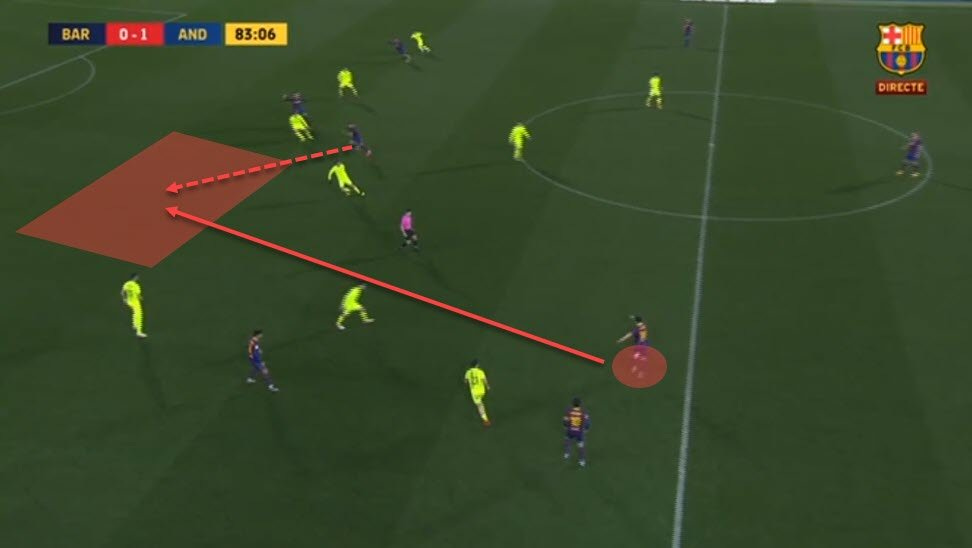
Casadó is the same. He’s mostly a ball-recycler, capable of beating the pressure through his close control & great decision making in possession. His movement is an incredible weapon as he has excellent awareness to recognise where and when to move. He's heavily involved & accurate, and that signals security on the ball. But also more cautious, avoiding risky sequences.
A Barcelona pivot must be able to retain possession when aggressively pressed by the opposition and finding pockets of space or passing channels to exploit is key in these situations. Fortunately, Casadó is very good at this. He will scan often & efficiently, which maximises the chance for success.
Even though we don’t see it in the image below, Casadó scans multiple times while dropping deeper to assist the build-up. Once he recognises where the play needs to go next, he wastes no time in the execution.
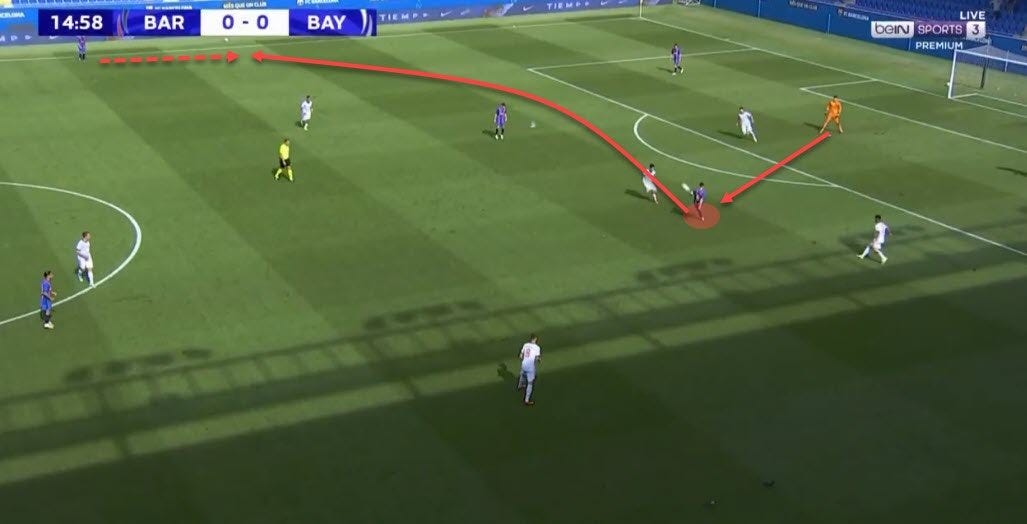
These are, of course, some of the basic aspects of both players that make them fitting profiles for the role in question. You can find their full profiles on TotalFootballAnalysis, where I’ve published most of my LaMasia scout reports. The main takeaway here, however, is that Barcelona can take two different approaches to tackle the post-Busquets era.
One would stay in line with tradition while the other would break away from it. It’s difficult to say either is superior as we simply don’t know how those players would perform the role. There are too many variables that make it impossible to predict with absolute certainty. But options are on the table and sooner rather than later, Barcelona will have to consider them.
Until then, we’ll just have to wait.
